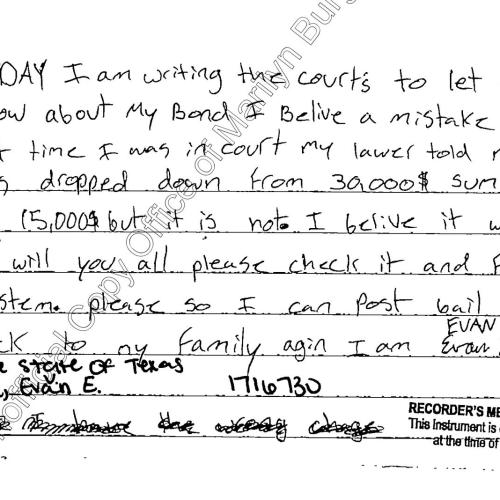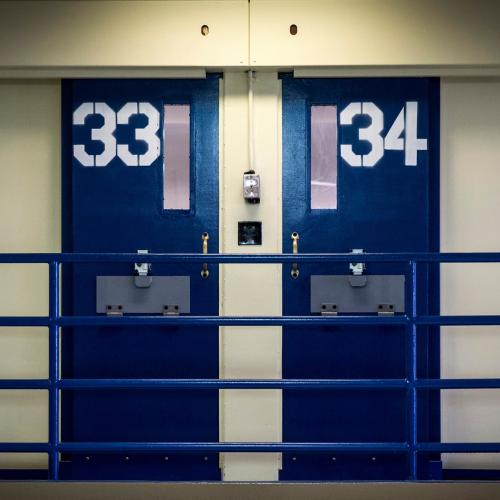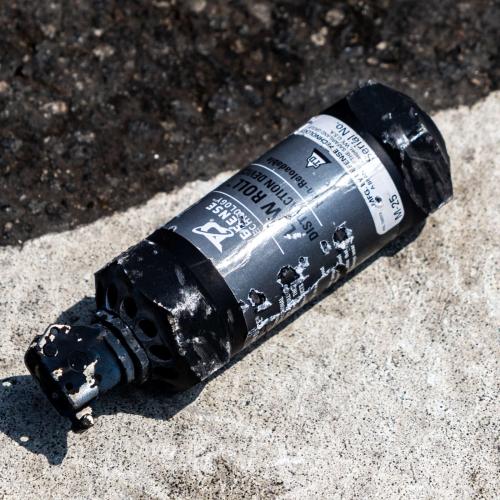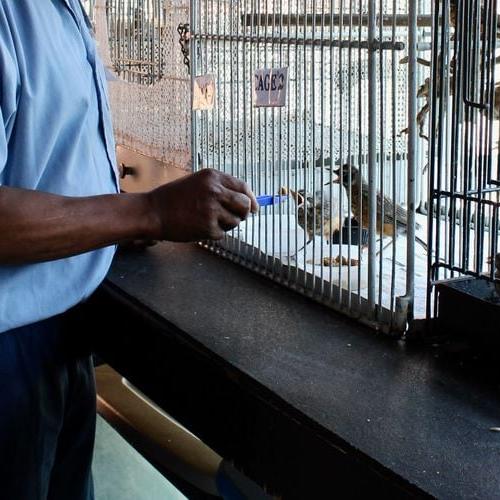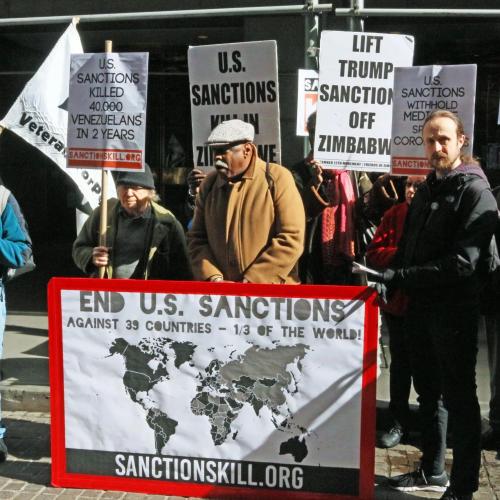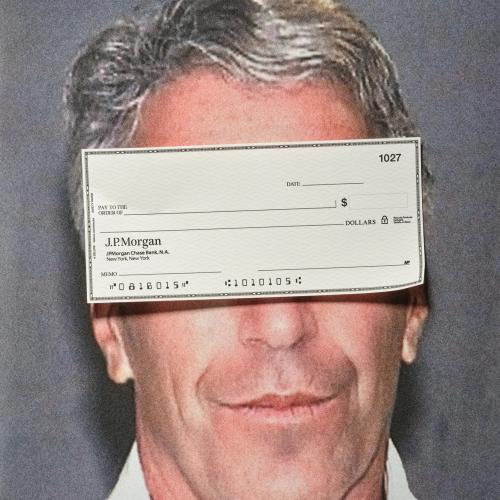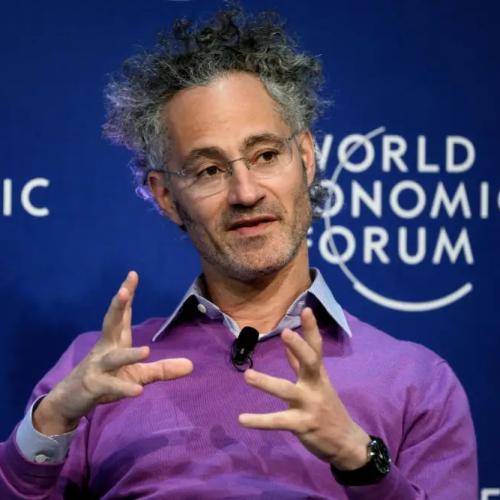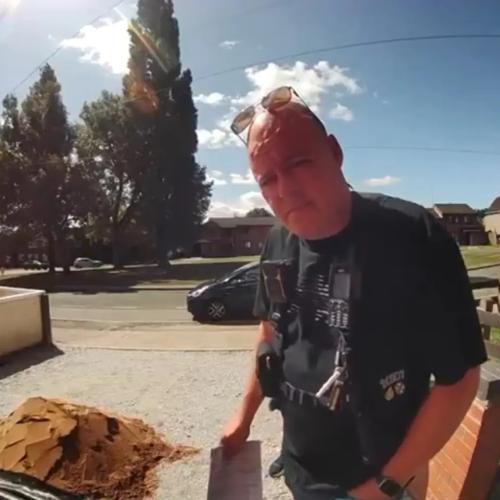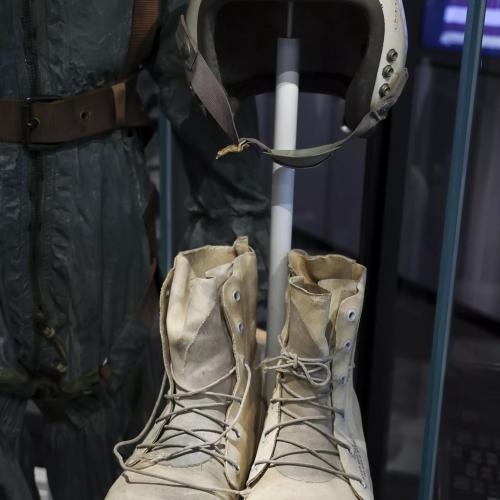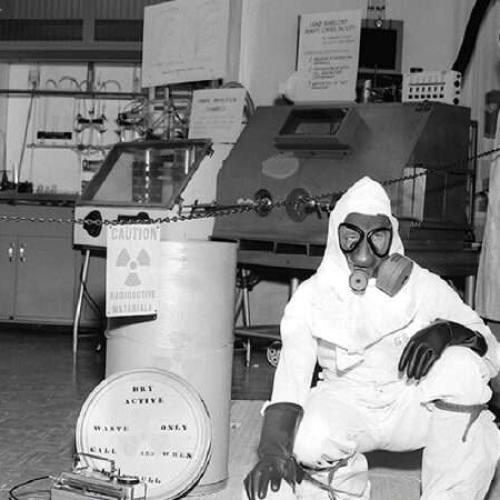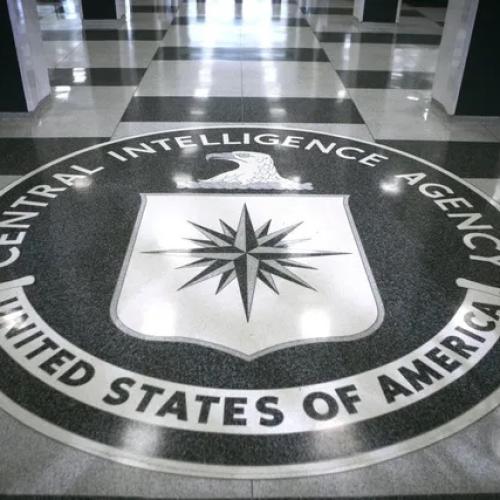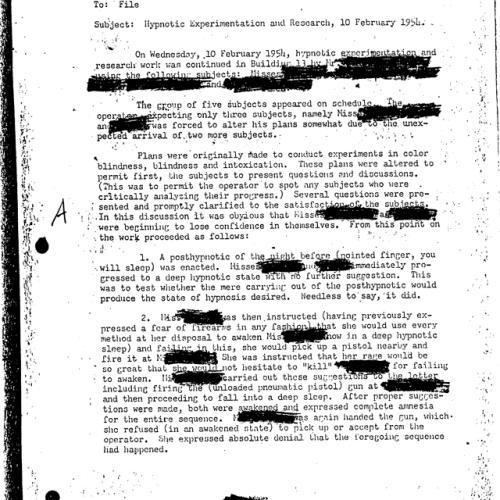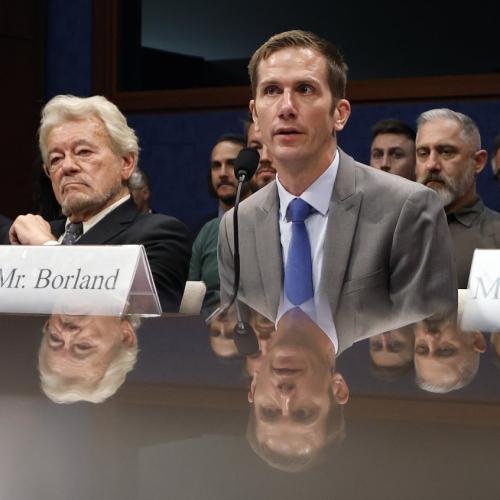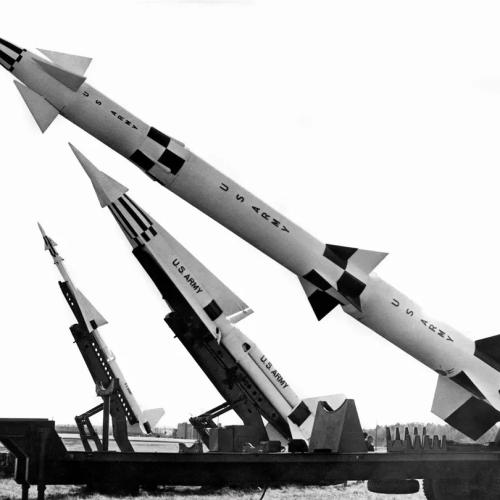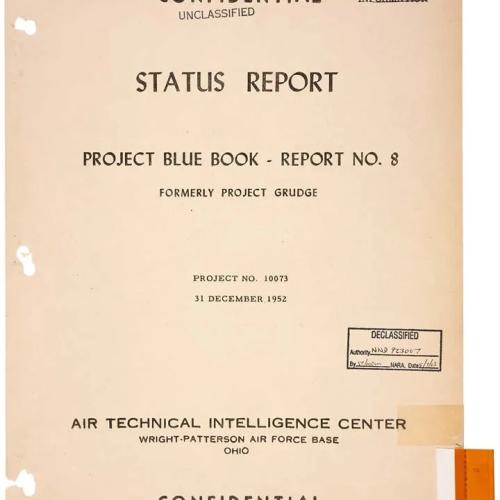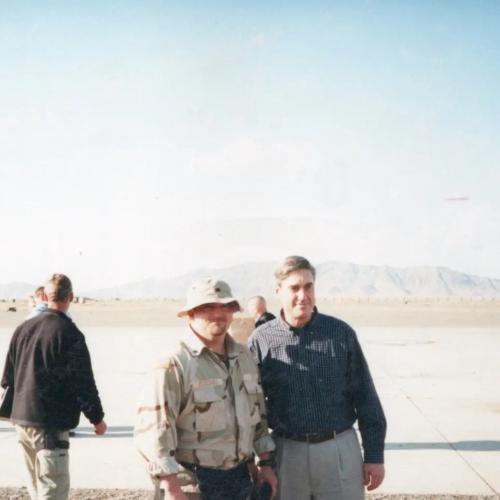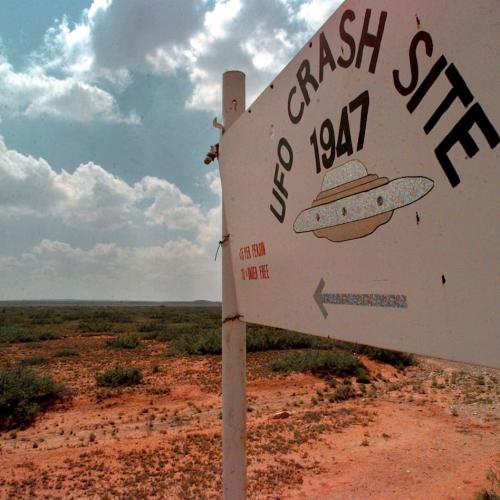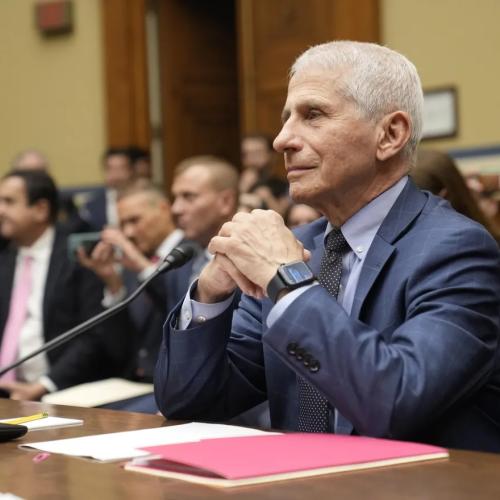Nuclear Power Media Articles
Below are key excerpts of revealing news articles on Nuclear Power from reliable news media sources. If any link fails to function, a paywall blocks full access, or the article is no longer available, try these digital tools.
The U.S. government secretly allowed radiation from a damaged reactor to be released into air over the San Fernando and Simi valleys in the wake of a major nuclear meltdown in Southern California more than 50 years ago fallout that nearby residents contend continues to cause serious health consequences and, in some cases, death. "Area Four," which is part of the once-secret Santa Susana Field Lab, [was] founded in 1947 to test experimental nuclear reactors and rocket systems. In 1959, Area Four was the site of one of the worst nuclear accidents in U.S. history. But the federal government still hasn't told the public that radiation was released into the atmosphere as a result of the partial nuclear meltdown. Now, whistleblowers ... have recounted how during and after that accident they were ordered to release dangerous radioactive gases into the air above Los Angeles and Ventura counties, often under cover of night, and how their bosses swore them to secrecy. For years starting in 1959, workers at Area Four were routinely instructed to release radioactive materials into the air above neighboring communities, through the exhaust stacks of nuclear reactors, open doors, and by burning radioactive waste. Radioactive contamination ... remains in the soil and water of Area Four and in some areas off-site. The fallout could be linked to illnesses, including cancer, among residents living nearby. In addition to the radiation, dozens of toxic chemicals, including TCE and Perchlorate, were also released ... from the 1950s to 80s.
Note: The government is lying, and people are dying. For lots more on this huge nuclear cover-up, see this NBC article and this one. You can also watch an eight-minute History Channel video on this disaster. The video states that the amount of radiation released during this accident was 240 times the amount released at Three Mile Island, making it one of the worst nuclear disasters in history, yet it was all kept secret. For more, see concise summaries of deeply revealing news articles on government corruption and nuclear power issues.
A French secret service diver who took part in the operation to sink Greenpeace ship the Rainbow Warrior 30 years ago has spoken publicly for the first time to apologise for his actions. Jean-Luc Kister ... was one of two divers serving with the French intelligence service, the Direction gnrale de la scurit extrieure (DGSE), who attached limpet mines to the hull of the vessel moored in Auckland in 1985. The Rainbow Warrior was heading for the Mururoa Atoll in the South Pacific in French Polynesia where France was planning a series of nuclear tests. French agents posing as Swiss tourists had earlier visited the ship ... to gather information for the operation. The first mine ... blew a large hole in the ship. Paris initially denied any involvement in the sinking, [which killed photographer Fernando Pereira], and described it as a terrorist attack. Documents released in 2005 and published in the Guardian, showed that France [also] tried to blame British intelligence for the sinking. The French governments responsibility, however, was quickly established. In 1987, under international pressure, France paid $8.2m damages to Greenpeace. It also paid an undisclosed sum to the Pereira family. Kister claims politicians in Paris turned down other suggestions for dealing with the Greenpeace protest. He said it was an unfair clandestine operation conducted in an allied, friendly and peaceful country ... and accused French politicians of high treason for having leaked his name and role in the operation after the sinking.
Note: By posing as Swiss tourists to spy on the Greenpeace ship, attacking this ship, and then blaming the attack on "terrorists", the French carried out a "false flag" attack. For more along these lines, see concise summaries of deeply revealing news articles about corruption in government and in the intelligence community.
Half buried in the sand, the vast structure looks like a downed UFO. At the summit, figures carved into the weathered concrete state only the year of construction: 1979. Officially, this vast structure is known as the Runit Dome. Locals call it The Tomb. Below the 18-inch concrete cap rests the United States cold war legacy to this remote corner of the Pacific Ocean: 111,000 cubic yards of radioactive debris left behind after 12 years of nuclear tests. Sections of concrete have started to crack away. Underground, radioactive waste has already started to leach out of the crater: according to a 2013 report by the US Department of Energy, soil around the dome is already more contaminated than its contents. The US has never formally apologized to the Marshall Islands for turning it into an atomic testing ground. When the UN special rapporteur on human rights and toxic waste, Calin Georgescu, visited the Marshall Islands in 2012 he criticized the US, remarking that the islanders feel like nomads in their own country. Nuclear testing, he said, left a legacy of distrust in the hearts and minds of the Marshallese. Why Enewetak? asked Ading, Enewetaks exiled senator during an interview in the nations capital. Every day, I have that same question. Why not go to some other atoll in the world? Or why not do it in Nevada, their backyard? I know why. Because they dont want the burden of having nuclear waste in their backyard. They want the nuclear waste ... thousands miles away. Thats why they picked the Marshall Islands.
Note: Reports of the effects of the nuclear bombs dropped on Hiroshima and Nagasaki were systematically suppressed while this nuclear testing occurred. For more along these lines, see concise summaries of deeply revealing government corruption news articles from reliable major media sources.
Roughly 600 officers, known as missileers ... are responsible for launching America's 450 nuclear-tipped intercontinental ballistic missiles. [They] have agreed to render whole cities [into] "smokin' holes." [In their training] the first requirement is signing a document committing to end the world if so ordered by the president. After a few months of key launch exercises ... "you become utterly desensitized to tending nuclear weapons," one former missileer says. Three years of sleepless nights following checklists out on the American tundra feels like a prison term. That might explain why a disproportionate number of nuclear commanders and missileers have recently been charged with criminal acts. ICBM bases [have] unusually high rates of criminality, domestic violence and security lapses. Court-martial rates ... are more than twice as high as in the overall Air Force. In October 2013, Michael Carey, a two-star general overseeing the entire nuclear command, was ousted for "misconduct" on an official trip to Moscow. A few months later [two officers] were caught sending phone messages to 11 other officers about "specific, illegal drug use that included synthetic drugs, Ecstasy, and amphetamines." Over the years, safeguards have failed so spectacularly that even an atheist might suspect divine intervention. A hydrogen bomb fell out of a plane in 1958 and leveled a South Carolina home without detonating. Another bomb accidentally parachuted towards Goldsboro, North Carolina in 1961, but failed to activate.
Note: Read about a wild incident where a UFO shut down many ICBMs seemingly as a message to humanity not to play with these toys. For more along these lines, see concise summaries of deeply revealing news articles on military corruption from reliable major media sources. Then explore the excellent, reliable resources provided in our War Information Center.
An 85-year-old nun and two fellow Catholic peace activists who splashed blood on the walls of a bunker holding weapons-grade uranium exposing vulnerabilities in the nation's nuclear security were wrongly convicted of sabotage, an appeals court ruled Friday. At issue was whether Sister Megan Rice, 66-year-old Michael Walli and 59-year-old Greg Boertje-Obed injured national security when they cut through several fences to break into the Y-12 National Security Complex in Oak Ridge in July 2012. A panel of the 6th U.S. Circuit Court of Appeals ruled in a 2-1 decision that they did not. Once there, the trio had hung banners, prayed and hammered on the outside wall of the bunker to symbolize a Bible passage that refers to the end of war: "They will beat their swords into ploughshares." "If a defendant blew up a building used to manufacture components for nuclear weapons ... the government surely could demonstrate an adverse effect on the nation's ability to attack or defend," the opinion says. "But vague platitudes about a facility's 'crucial role in the national defense' are not enough to convict a defendant of sabotage." Rice wrote in a letter to The Associated Press in March that "the important message of the appeal is the illegality of nuclear weapons, which are sabotaging the planet."
Note: Explore a treasure trove of concise summaries of incredibly inspiring news articles which will inspire you to make a difference.
The headline on the website Pravda trumpeted: Russian Nuclear Energy Conquers the World. The article, in January 2013, detailed how the Russian atomic energy agency, Rosatom, [became] one of the worlds largest uranium producers and brought Mr. Putin closer to his goal of controlling much of the global uranium supply chain. Major donors to the charitable endeavors of former President Bill Clinton and his family ... built, financed and eventually sold off to the Russians a company that would become known as Uranium One. Beyond mines in Kazakhstan that are among the most lucrative in the world, the sale gave the Russians control of one-fifth of all uranium production capacity in the United States. Uranium is considered a strategic asset. The deal had to be approved by ... United States government agencies. Among the agencies that eventually signed off was the State Department, then headed by Mr. Clintons wife, Hillary Rodham Clinton. As the Russians gradually assumed control of Uranium One ... a flow of cash made its way to the Clinton Foundation. Uranium Ones chairman used his family foundation to make four donations totaling $2.35 million. Those contributions were not publicly disclosed by the Clintons. Other people with ties to the company made donations as well. And shortly after the Russians announced their intention to acquire a majority stake in Uranium One, Mr. Clinton received $500,000 for a Moscow speech from a Russian investment bank with links to the Kremlin that was promoting Uranium One stock.
Note: The State Department also approved $165 Billion in commercial arms sales to Clinton Foundation donors under Clinton's leadership. For more along these lines, see concise summaries of deeply revealing government corruption news articles from reliable major media sources.
In a ghostly reminder of the Bay Area's nuclear heritage, scientists announced Thursday they have captured the first clear images of a radioactivity-polluted World War II aircraft carrier that rests on the ocean floor 30 miles off the coast of Half Moon Bay. The USS Independence saw combat at Wake Island and other decisive battles against Japan in 1944 and 1945 and was later blasted with radiation in two South Pacific nuclear tests. The Navy deliberately sank the contaminated ship in 1951 south of the Farallon Islands. The rediscovery of the USS Independence offers a fascinating glimpse into American military history and raises old questions about the safety of the Farallon Islands Radioactive Waste Dump ... where the federal government dumped nearly 48,000 barrels of low-level radioactive waste between 1946 and 1970. The Independence was sunk on Jan. 26, 1951, and came to rest 2,600 feet below the ocean surface. The Navy withheld the location of the wreck for decades, but the U.S. Geological Survey found its likely resting place while mapping the sea floor in 1990. Retired judge and state legislator Quentin Kopp, who many years ago demanded research into the Navy's disposal of radioactive material off Northern California before 1970, said Thursday that the question of whether the waste posed a risk to humans and wildlife was never resolved.
Note: A CNN article and a CBS article fail to mention anything about the Farallon Islands Radioactive Waste Dump and CNN doesn't even mention radioactive material on the ship. Neither mentions the many drums of radioactive material are buried within the ship. Do you think the media is complicit in hiding key information regarding public health? For verifiable information that this happens much more than people think, read this two-page summary.
Weeks before Pacific Gas and Electric Co. released a long-awaited seismic report about the Diablo Canyon nuclear plant last year, Nuclear Regulatory Commission officials had already drafted talking points declaring the plant safe from earthquakes, Sen. Barbara Boxer said Wednesday. An internal commission memo showed that the agency was planning to tell the public that the NRC had reviewed the report, and it had concluded Diablo Canyon was seismically safe before even seeing the report. Boxer ... used it to illustrate what she called the commissions lax attitude toward seismic safety, even in the wake of the 2011 meltdown of three reactors at Japans Fukushima Daiichi power plant. Her comments shone new light on a controversy that has simmered since the seismic safety reports release last fall. PG&E released the report on Sept. 10. That same day, the commission the federal agency that regulates nuclear plants formally rejected complaints from one of its own former inspectors at Diablo Canyon, who had argued that the plant should be closed. Several newly discovered faults nearby, he said, could produce more violent shaking than Diablo was designed to withstand. Environmental groups ... accused the commission and PG&E of colluding to release both the report and the rejection of the inspectors complaint on the same day, generating positive press about Diablos safety.
Note: Why would Nuclear Regulatory Commission officials ignore their responsibility to protect the public from the potentially disastrous combination of earthquakes and nuclear power plants?
The cleanup of Japans devastated Fukushima Daiichi nuclear plant crossed an important milestone on Saturday when the plants operator announced it had safely removed the radioactive fuel from the most vulnerable of the four heavily damaged reactor buildings. The company, known as Tepco, had put a high priority on removing the No. 4 units some 1,500 fuel rods because they sat in a largely unprotected storage pool on an upper floor of the building, which had been gutted by a powerful hydrogen explosion. By succeeding in the technically difficult task of extracting those rods, Tepco eliminated one of the plants most worrisome vulnerabilities. It took almost four years to reach this goal. The aging Fukushima Daiichi plant suffered a triple meltdown after a huge earthquake and tsunami struck on March 11, 2011, knocking out vital cooling systems. Tepco still faces the far more challenging task of removing the ruined fuel cores from the three reactors that melted down in the accident. These reactors were so damaged and their levels of radioactivity remain so high that removing their fuel is expected to take decades. Some experts have said it may not be possible at all, and have called instead for simply encasing those reactors in a sarcophagus of thick concrete. The fuel cores from those three reactors, Nos. 1-3, are believed to have melted like wax [into] lumps on the bottom of the reactor vessels.
Note: For more along these lines, see concise summaries of deeply revealing news articles about the disastrous pitfalls of nuclear power from reliable major media sources.
The Y-12 nuclear weapons plant in Oakridge, Tennessee, is supposed to be impregnable. But on July 28th 2012, an 84 year-old nun called Sister Megan Rice broke through a series of high-security fences surrounding the plant and reached a uranium storage bunker at the center of the complex. She was accompanied by Greg Boertje-Obed (57) and Michael Walli (63). The trio ... sat down for a picnic. When the security guards arrived they offered them some bread. Two years later, Rice, Walli and Boertje-Obed were sentenced to federal prison terms of between three and five years, plus restitution in the amount of $53,000 for damage done to the plant - far in excess of the estimates produced at their trial. When questioned about her actions at her trial by Judge Amul Thapar, Rice told him that her actions were intended to draw attention to the US stockpile of nuclear weapons that she and her co-defendants felt was illegal and immoral. They also wanted to expose the ineffectiveness of the security systems that were supposed to protect these weapons from theft or damage. We were acutely mindful of the widespread loss to humanity that nuclear weapons have already caused, wrote Rice afterwards in a letter to her supporters, and we realize that all life on earth could be exterminated through intentional, accidental or technical error. Our action exposed the storage of weapons-making materials deliberately hidden from the general public. All three defendants were found guilty of sabotage of the national defense. Just before they were sentenced, Rice made a statement to the court which ended like this: We have to speak, and were happy to die for that. To remain in prison for the rest of my life is the greatest honor that you could give me. Please dont be lenient with me. It would be an honor for that to happen.
Note: If you would like to receive copies of Sister Rices letters to her supporters, please email [email protected]. Mailing addresses for Sister Rice and her co-defendants can be found here and here. You can also sign a petition requesting their pardon.
A sprawling new plant [near Kansas City] in a former soybean field makes the mechanical guts of Americas atomic warheads. Bigger than the Pentagon, full of futuristic gear and thousands of workers, the plant, dedicated last month, modernizes the aging weapons that the United States can fire from missiles, bombers and submarines. It is part of a nationwide wave of atomic revitalization that includes plans for a new generation of weapon carriers. A recent federal study put the collective price tag, over the next three decades, at up to a trillion dollars. This expansion comes under a president who campaigned for a nuclear-free world and made disarmament a main goal of American defense policy. Supporters of arms control, as well as some of President Obamas closest advisers, say their hopes for the presidents vision have turned to baffled disappointment as the modernization of nuclear capabilities has become an end unto itself. A lot of it is hard to explain, said Sam Nunn, the former senator whose writings on nuclear disarmament deeply influenced Mr. Obama.
Note: Consider the possibility the Obama, shortly after becoming president, may have received a death threat to his children if he didn't comply with the desires of powerful, greedy forces which want everlasting war on our planet. The trillion-dollar war industry has no qualms threatening anyone who gets in the way of their profits. For more on this, see concise summaries of deeply revealing war news articles from reliable major media sources and read what a top US general had to say about how he was manipulated.
A 55-gallon drum of nuclear waste, buried in a salt shaft 2,150 feet under the New Mexico desert, violently erupted late on Feb. 14 and spewed mounds of radioactive white foam. The flowing mass, ... laced with plutonium, went airborne, traveled up a ventilation duct to the surface and delivered ... radiation doses to 21 workers. The accident contaminated the nation's only dump for nuclear weapons waste ... and gave the nation's elite ranks of nuclear chemists a mystery they still cannot unravel. Six months after the accident, the exact chemical reaction that caused the drum to burst is still not understood. Indeed, the Energy Department has been unable to precisely identify the chemical composition of the waste in the drum. The accident at the facility near Carlsbad, N.M., known as the Waste Isolation Pilot Plant, or WIPP, is likely to cause at least an 18-month shutdown and possibly a closure that could last several years. A preliminary Energy Department investigation found more than 30 safety lapses at the plant, including technical shortcomings and failures in the overall approach to safety. The accident raises tough questions about the Energy Department's ability to safely manage the nation's stockpiles of deadly nuclear waste. "The accident was a horrific comedy of errors," said James Conca, a scientific advisor and expert on the WIPP. "This was the flagship of the Energy Department, the most successful program it had. The ramifications of this are going to be huge. Heads will roll."
Note: For more on this, see concise summaries of deeply revealing nuclear weapons dangers news articles from reliable major media sources.
Reindeer farms and grazing Holstein cows dot a vast stretch of rolling green pasture here on Japan's northern tip. Underground it's a different story. Workers and scientists have carved a sprawling laboratory deep below this sleep dairy town that, despite government reassurances, some of Horonobe's 2,500 residents fear could turn their neighborhood into a nuclear waste storage site. Japanese utilities have more than 17,000 tons of "spent" fuel rods that have finished their useful life but will remain dangerously radioactive for thousands of years. What to do with them is a vexing problem that nuclear-powered nations around the world face, and that has come to the fore as Japan debates whether to keep using nuclear energy after the 2011 disaster at Tokyo Electric Power Co.'s Fukushima plant. The answer to that problem may lie in the Horonobe Underground Research Center, which has been collecting geological data to determine if and how radioactive waste can be stored safely for as long as 100,000 years in a country that is susceptible to volcanic activity, earthquakes and shifting underground water flows. But as with America's doomed Yucca Mountain project, finding a community willing to host a radioactive dump site is proving difficult, even with a raft of financial enticements. One mayor expressed interest in 2007, and was booted from office in the next election.
Note: For more on this, see concise summaries of deeply revealing nuclear power news articles from reliable major media sources.
The operator of the wrecked Fukushima Daiichi nuclear power plant has started pumping groundwater into the Pacific ocean in an attempt to manage the large volume of contaminated water at the site. Tokyo Electric Power (Tepco) said it had released 560 tonnes of groundwater pumped from 12 wells located upstream from the damaged reactors. The water had been temporarily stored in a tank so it could undergo safety checks before being released, the firm added. The buildup of toxic water is the most urgent problem facing workers at the plant, almost two years after the environment ministry said 300 tonnes of contaminated groundwater from Fukushima Daiichi was seeping into the ocean every day. The groundwater, which flows in from hills behind the plant, mixes with contaminated water used to cool melted fuel before ending up in the sea. Officials concede that decommissioning the reactors will be impossible until the water issue has been resolved. The bypass system intercepts clean groundwater as it flows downhill toward the sea and reroutes it around the plant. It is expected to reduce the amount of water flowing into the reactor basements by up to 100 tonnes a day ... and relieve pressure on the storage tanks, which will soon reach their capacity. But the system does not include the coolant water that becomes dangerously contaminated after it is pumped into the basements of three reactors that suffered meltdown after the plant was struck by an earthquake and tsunami in March 2011. That water will continue to be stored in more than 1,000 tanks at the site, while officials debate how to safely dispose of it.
Note: For more on the devastating impacts of nuclear power, see the deeply revealing reports from reliable major media sources available here.
Hanford union workers tell NBC Right Now there was an explosion at the plutonium finishing plant cleanup site weeks ago, but the event wasn't shared with the public. The Hanford union representative says it happened when workers were cutting some pipe as part of the demolition of the Plutonium Finishing Plant. The union representative wants to remain anonymous and says workers are concerned management isn't putting worker safety first. "Having a pipe explode at probably the most contaminated facility in the United States. This is one of the most hazardous buildings in the U.S." said the Union representative. PFP is where the plutonium was manufactured for one of the atomic bombs dropped in World War II. Workers describe the explosion as a spark then flames that shot out of a pipe and a loud bang that vibrated the pipe and the worker. "Management continues to call it a small pop even though the workers say no this thing was a big, loud bang like a shot gun blast," said the union representative. Workers say they think the contractor is playing down the explosion and possible safety concerns to protect themselves from fines and work delays. The union representative says if the pipe broke, workers would have inhaled plutonium particles that could have possibly deadly health effects.
Note: For more on this, see concise summaries of deeply revealing nuclear cover-ups news articles from reliable major media sources.
In the tense days after a powerful earthquake and tsunami crippled the Fukushima Daiichi power plant in Japan on March 11, 2011, staff at the U.S. Nuclear Regulatory Commission made a concerted effort to play down the risk of earthquakes and tsunamis to Americas aging nuclear plants, according to thousands of internal emails reviewed by NBC News. The emails, obtained via the Freedom of Information Act, show that the campaign to reassure the public about Americas nuclear industry came as the agencys own experts were questioning U.S. safety standards and scrambling to determine whether new rules were needed to ensure that the meltdown occurring at the Japanese plant could not occur here. At the end of that long first weekend of the crisis three years ago, NRC Public Affairs Director Eliot Brenner thanked his staff for sticking to the talking points that the team had been distributing to senior officials and the public. "While we know more than these say," Brenner wrote, "we're sticking to this story for now." There are numerous examples in the emails of apparent misdirection or concealment in the initial weeks after the Japanese plant was devastated: When asked to help reporters explain what would happen during the worst-case scenario -- a nuclear meltdown -- the agency declined to address the questions. The emails pull back the curtain on the agencys efforts to protect the industry it is supposed to regulate. The NRC officials didn't lie, but they didn't always tell the whole truth either. When someone asked about a topic that might reflect negatively on the industry, they changed the subject.
Note: For more on corruption in the nuclear power industry, see the deeply revealing reports from reliable major media sources available here.
At a motel in the town of Hirono, just outside a restricted zone in Fukushima Prefecture, [the] residents were all men, all apparently working on the cleanup of the Fukushima Dai-ichi nuclear plant, where three reactors melted down and a fourth caught on fire after a quake and tsunami in 2011. The plant's operator is mostly using subcontractors to supply labor, which drives down the pay and tends to leave the poorest workers living in crowded dormitories. Workers and labor activists say that Tokyo Electric Power Company, or TEPCO, is subcontracting the work out to avoid taking direct responsibility financial and otherwise for the dangers the workers face each day at the plant. Recent days and weeks have brought embarrassing news for Tepco, including that levels of radioactive strontium in wells in the plant were reported months late, and were 10 times lower than the actual amount. TEPCO says it was a measurement error. Some critics say that TEPCO can't be trusted and that the world's largest nuclear accident is still waiting to happen at Fukushima, such as an accidental nuclear reaction that releases large amounts of harmful radiation into the air. TEPCO dismisses predictions like this as alarmist. Japanese themselves are highly divided on the issue, just as they are about whether or not their country should continue to rely on nuclear power, which previously supplied up to a third of their electricity. One thing that seems certain is that the work of cleaning up and shutting down the Fukushima Daiichi nuclear plant will go on for a long time. TEPCO predicts it could last 30 or 40 years. Others say that estimate is blindly optimistic.
Note: Why is this critical news getting so little coverage? For more on deception and corruption around nuclear power, see the deeply revealing reports from reliable major media sources available here.
In what may be the biggest such scandal in Air Force history, 34 officers entrusted with land-based nuclear missiles have been pulled off the job for alleged involvement in a cheating ring that officials say was uncovered during a drug probe. The 34 are suspected of cheating several months ago on a routine proficiency test that includes checking missile launch officers' knowledge of how to handle an "emergency war order," which is the term for the authorization required to launch a nuclear weapon. The cheating scandal is the latest in a series of Air Force nuclear stumbles ... including deliberate violations of safety rules, failures of inspections, breakdowns in training and evidence that the men and women who operate the missiles from underground command posts are suffering burnout. In October the general who commands the nuclear missile force was fired for engaging in embarrassing behavior, including drunkenness, while leading a U.S. delegation to a nuclear exercise in Russia. The AP disclosed in May an internal Air Force email in which a missile operations officer complained that his force was infested with "rot" bad attitudes and disregard for discipline. The Air Force's nuclear mission includes operation of 450 Minuteman 3 intercontinental ballistic missiles. The Malmstrom unit failed a nuclear safety and security inspection in August but succeeded on a redo in October.
Note: Some are speculating about a purge of high-level U.S. military officers. For evidence of this, click here. And is it just a coincidence that the Malmstrom unit is mentioned? That is the base where several officers testified that a UFO shut down all nuclear warheads several decades ago. For more, click here. And for more on military corruption, see the deeply revealing reports from reliable major media sources available here.
In an extraordinary feat of subterfuge, Israel managed to assemble an entire underground nuclear arsenal now estimated at 80 warheads, on a par with India and Pakistan and even tested a bomb nearly half a century ago, with a minimum of international outcry or even much public awareness of what it was doing. Despite the fact that the Israel's nuclear programme has been an open secret since a disgruntled technician, Mordechai Vanunu, blew the whistle on it in 1986, the official Israeli position is still never to confirm or deny its existence. When the former speaker of the Knesset, Avraham Burg, broke the taboo last month, declaring Israeli possession of both nuclear and chemical weapons and describing the official non-disclosure policy as "outdated and childish" a rightwing group formally called for a police investigation for treason. Meanwhile, western governments have played along with the policy of "opacity" by avoiding all mention of the issue. Israel ... almost certainly broke a treaty banning nuclear tests, as well as countless national and international laws restricting the traffic in nuclear materials and technology. The list of nations that secretly sold Israel the material and expertise to make nuclear warheads, or who turned a blind eye to its theft, include today's staunchest campaigners against proliferation: the US, France, Germany, Britain and even Norway. Israeli agents charged with buying fissile material and state-of-the-art technology found their way into some of the most sensitive industrial establishments in the world.
Note: For more on government secrecy, see the deeply revealing reports from reliable major media sources available here.
Japan's flagging anti-nuclear movement is getting a boost from two former prime ministers who are calling for atomic power to be phased out following the Fukushima disaster. Former Prime Minister Junichiro Koizumi said [on November 12] that the current prime minister, Shinzo Abe, ... "should use the power given to him to do what the majority of the people want," Koizumi said in a speech at the Japan Press Club. "It can be achieved. Why miss this chance?" Koizumi, who supported nuclear power during his 2001-2006 term in office, said that with Japan's nuclear plants all offline for safety checks it would be easiest to begin the phase-out soon. Polls have shown the majority of the public ... prefers to shift away from the nuclear plants that provided nearly a third of Japan's power generation capacity before the accident at the Fukushima Dai-Ichi nuclear plant. Three [former prime ministers], including Koizumi, have said they support ending use of nuclear power. Their support could help reinvigorate the anti-nuclear movement, which has lost some of its vitality nearly three years after the Fukushima accident. Another former prime minister, Morihiro Hosokawa, said in an interview ... that he also favors an end to reliance on nuclear power. "I can't understand why they want restarts of the nuclear plants when there is no place to discard the nuclear waste," said Hosokawa, who served as prime minister for eight months in 1993-94. "It would be a crime against future generations for our generation to restart nuclear plants without resolving this issue," he said. Experts have questioned whether earthquake-prone Japan can safely store nuclear waste under any scenario.
Note: For more on the risks of nuclear power, see the deeply revealing reports from reliable major media sources available here.
Important Note: Explore our full index to key excerpts of revealing major media news articles on several dozen engaging topics. And don't miss amazing excerpts from 20 of the most revealing news articles ever published.





















